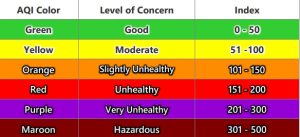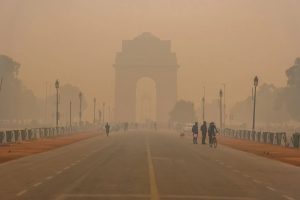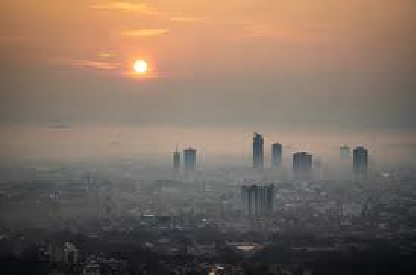Certain areas have been consistently experiencing high levels of pollution. Dehiwala-Mount Lavinia, Moratuwa, and Kelaniya have experienced higher air pollution levels according to recent air quality measurements carried out by the National Building Research Organization (NBRO).
Exhaust fumes from vehicles are a major source of air pollution, particularly in these densely populated areas. It has been identified that a number of vehicles are old and do not pass current regulations on emission control. They are being driven around the city, and traffic congestion further aggravates the situation.
Director of the NBRO Sarath Premasiri said the Air Quality Index in Colombo was close to 100 on Wednesday (17), while the Index in other areas was between 50 and 100. On Monday (15), the Air Quality Index surrounding Battaramulla and Colombo Fort was recorded at 105, and in Jaffna, it was 100.

Air quality is measured on an Air Quality Index (AQI) and ranges from 0 to 500. Data is gathered from a number of points around the country. When determining air quality, consideration is given to the most commonly found pollutants that have a significant impact. Carbon monoxide (CO), ozone (O3), nitrogen dioxide (NO2), sulfur dioxide (SO2), and particulate matter (PM10) are key contributors to air pollution in Colombo and its suburbs.
A study carried out by Verité Research revealed that maintaining good air quality could potentially reduce all-cause mortality by an estimated 1% to 6% nationwide when compared to the baseline. This highlights the need for a comprehensive policy on air quality to promote a cleaner and healthier environment for the people of Sri Lanka.
Children and the elderly are sensitive groups due to their high susceptibility. The breathing rate of children is twice that of adults, hence they take more air into the respiratory tract. Air pollution weakens their immune system and increases the vulnerability to a range of diseases. Such children are more susceptible to relatively diminished neurodevelopment and cognitive ability, a higher risk of developing asthma, Acute Lower Respiratory Infection (ALRI), childhood cancer, and chronic diseases, such as cardiovascular disease.

Indian Air Pollutants in Sri Lanka:
A number of studies have indicated that there is a link between Indian air pollution and air quality deterioration in Sri Lanka. A 2020 study by the National Building Research Organisation of Sri Lanka found that transboundary air pollution from India can contribute up to 30% of PM2.5 levels in Sri Lankan cities during winter months.
Satellite imagery of aerosol optical depth (AOD), which measures the amount of sunlight obstructed by particles in the atmosphere, has shown clear instances of transboundary air pollution plumes originating from India reaching Sri Lanka.
Delhi occupies the fourth spot with an AQI of 162. Vehicle emissions, industrial activity, and crop burning are the primary culprits behind Delhi’s air pollution woes.
New Delhi experiences “Very Unhealthy” air quality several times a year, particularly during the winter months (October to March) when stagnant weather conditions trap pollutants and agricultural burning in neighboring states adds to the problem.
During the winter months (November to February), northeastward winds carry pollutants from industrial and agricultural regions in India, particularly northern India, towards Sri Lanka. These winds can significantly increase particulate matter (PM2.5) levels in Sri Lankan cities like Colombo and Kandy.
Air quality monitoring stations in Sri Lanka have recorded spikes in PM2.5 levels coinciding with periods of high pollution in India. For example, in November 2023, Colombo’s AQI reached “unhealthy” levels (151-200) as a result of transboundary air pollution from India. In December 2022, following cyclonic conditions over the Bay of Bengal, the air quality in Colombo reached the dangerous level of 169 on the air quality index, compelling the government to close schools in smog-choked towns. The air pollution in Jaffna, in the Northern Province, was the nation’s highest, at 294, well above the maximum safe value of 150.
Studies carried out on air quality control have consistently focused on internal measures as well as transboundary measures to have better air quality for Sri Lanka.
Internally, stricter emission standards, better public transport, traffic management, and electrification of transportation have been proposed.
As for transboundary action, working with India to address air pollution sources and develop transboundary air pollution management strategies and implementing early warning systems to track and forecast transboundary air pollution events are recommended.
Click for More info :
- “Impact of Transboundary Air Pollution on PM2.5 Concentrations in Sri Lankan Cities” by National Building Research Organisation of Sri Lanka
- “Transboundary air pollution transport from India to Sri Lanka: Model simulations and satellite observations” by Indian Institute of Tropical Meteorology: https://www.eurasiareview.com/12122022-transboundary-winds-are-not-the-only-air-polluters-in-sri-lanka-analysis/
.







